| Trimurti | |
|---|---|
| Universe | |
 | |
| Affiliation | Deva, Shiva |
| Abode | Kailas |
| Mantra | Om Tridevaya Namah |
| Consort | Tridevi, Goddess Ganga |
| Translations of Trimurti | |
|---|---|
| English | Three forms |
| Sanskrit | ?????????? (trim?rti) |
| Bengali | ?????????? (trim?rti) |
| Hindi | ?????????? (trim?ti) |
| Javanese | ???????? (trimurti) |
| Kannada | ?????????? (trim?rti) |
| Malayalam | ????????????? (trim?rttika?) |
| Nepali | ?????????? (trim?ti) |
| Punjabi | ????????? (tr?m?rat?) |
| Tamil | ??????????????? (mum'm?rttika?) |
| Telugu | ???????????? (trim?rtulu) |
| Glossary of Hinduism | |
The Trim?rti (/tr??m??rti/; Sanskrit: ?????????? trim?rti, "three forms") is the trinity of supreme divinity in Hinduism in which the cosmic functions of creation, maintenance, and destruction are personified as a triad of deities, typically Brahma the creator, Vishnu the preserver, and Shiva the destroyer, though individual denominations may vary from that particular line-up. When all three deities of the Trimurti incarnate into a single avatar, the avatar is known as Dattatreya.
Contents
Evolution
The Puranic period saw the rise of post-Vedic religion and the evolution of what R. C. Majumdar calls "synthetic Hinduism."
This period had no homogeneity, and included orthodox Brahmanism in the form of remnants of older Vedic faith traditions, along with different sectarian religions, notably Shaivism, Vaishnavism, and Shaktism that were within the orthodox fold yet still formed distinct entities. One of the important traits of this period is a spirit of harmony between orthodox and sectarian forms. Regarding this spirit of reconciliation, R. C. Majumdar says that:
Its most notable expression is to be found in the theological conception of the Trim?rti, i.e., the manifestation of the supreme God in three forms of Brahm?, Vi??u, and ?iva... But the attempt cannot be regarded as a great success, for Brahm? never gained an ascendancy comparable to that of ?iva or Vi??u, and the different sects often conceived the Trim?rti as really the three manifestations of their own sectarian god, whom they regarded as Brahman or Absolute.
The identification of Brahma, Vishnu and Shiva as one being is strongly emphasized in the K?rma Pur??a, where in 1.6 Brahman is worshipped as Trimurti; 1.9 especially inculcates the unity of the three gods, and 1.26 relates to the same theme. Historian A. L. Basham explains the background of the Trimurti as follows, noting Western interest in the idea of trinity:
There must be some doubt as to whether the Hindu tradition has ever recognized Brahma as the Supreme Deity in the way that Visnu and Siva have been conceived of and worshiped.
The concept of Trimurti is also present in the Maitri Upanishad, where the three gods are explained as three of his supreme forms.[15]
Trimurti temples
Temples dedicated to various permutations of the Trimurti can be seen as early as the 8th century C.E., and there are even temples today in which the Trimurti are actively worshiped.
- Baroli Trimurti Temple
- Elephanta Caves
- Mithrananthapuram Trimurti Temple
- Prambanan Trimurti Temple
- Savadi Trimurti Temple
- Thripaya Trimurti Temple
Views within Hinduism
Sauram
The Saura sect that worships Surya as the supreme person of the godhead and saguna brahman doesn't accept the Trimurti as they believe Surya is God. Earlier forms of the Trimurti sometimes included Surya instead of Brahma, or as a fourth above the Trimurti, of whom the other three are manifestations; Surya is Brahma in the morning, Vishnu in the afternoon and Shiva in the evening. Surya was also a member of the original Vedic Trimurti, which included Varuna and Vayu. Some Sauras worship either Vishnu or Brahma or Shiva as manifestations of Surya, others worship the Trimurti as a manifestation of Surya, and others exclusively worship Surya alone.
Shaivism
Shaivites hold that, according to Shaiva Agama, Shiva performs five actions - creation, preservation, dissolution, concealing grace, and revealing grace. Respectively, these first three actions are associated with Shiva as Sadyojata (akin to Brahma), Vamadeva (akin to Vishnu) and Aghora (akin to Rudra). Thus, Brahma, Vishnu and Rudra are not deities different from Shiva, but rather are forms of Shiva. As Brahma/Sadyojata, Shiva creates. As Vishnu/Vamadeva, Shiva preserves. As Rudra/Aghora, he dissolves. This stands in contrast to the idea that Shiva is the "God of destruction." To Shaivites, Shiva is God and performs all actions, of which destruction is only but one. Ergo, the Trimurti is a form of Shiva Himself for Shaivas. Shaivites believe that Lord Shiva is the Supreme, who assumes various critical roles and assumes appropriate names and forms, and also stands transcending all these.[16] A prominent visual example of a Shaivite version of the Trimurti is the Trimurti Sadashiva sculpture in the Elephanta Caves on Gharapuri Island.
Brahmanism
The Brahmins follows to Brahma. As Brahma worships to Lord Shiva so following to him they also like Shaiva worships to Shiva. For them Brahma is the Parabrahaman and Supreme being, they believe Vishnu and Shiva as child of Brahma and forms of him only. In Brahmanism they believe that Brahma is Creator, Vishnu is Preserver and Shiva as Destroyer. They believe Brahma as the Param-pita of the world and gods. He only creates, preserves, and destroys everything to create again.[citation needed].
Shaktism
The Female-Centric Shaktidharma denomination assigns the eminent roles of the three forms (Trimurti) of Supreme Divinity not to masculine gods but instead to feminine goddesses: Mahasarasvati (Creator), Mahalaxmi (Preserver), and Mahakali (Destroyer). This feminine version of the Trimurti is called Tridevi ("three goddesses"). The masculine gods (Brahma, Vishnu, Shiva) are then relegated as auxiliary agents of the supreme feminine Tridevi.
Smartism
Smartism is a denomination of Hinduism that places emphasis on a group of five deities rather than just a single deity.[17] The "worship of the five forms" (pañc?yatana p?j?) system, which was popularized by the ninth-century philosopher ?ankar?c?rya among orthodox Brahmins of the Sm?rta tradition, invokes the five deities Ganesha, Vishnu, Brahma, Devi and Shiva.[18][19] ?ankar?c?rya later added Kartikeya to these five, making six total. This reformed system was promoted by ?ankar?c?rya primarily to unite the principal deities of the six major sects on an equal status.[20] The monistic philosophy preached by ?ankar?c?rya made it possible to choose one of these as a preferred principal deity and at the same time worship the other four deities as different forms of the same all-pervading Brahman.
Despite the fact that the Vishnu Purana describes that Vishnu manifests as Brahma in order to create and as Rudra (Shiva) in order to destroy,[21] Vaishnavism generally does not acknowledge the Trimurti concept and in Lord Vishnu but they believe in avataras of Vishnu like Buddha, Rama, Krishna,etc.They also believe that Shiva and Brahma both are forms of Vishnu. For example, the Dvaita school holds Vishnu alone to be the supreme God, with Shiva subordinate, and interprets the Puranas differently. For example, Vijayindra Tîrtha, a Dvaita scholar interprets the 18 puranas differently. He interprets the Vaishnavite puranas as satvic and Shaivite puranas as tamasic and that only satvic puranas are considered to be authoritative.[22]
Unlike most other Vaishnavite schools such as those of Ramanuja, Madhva and Chaitanya, Swaminarayan, guru of the Hindu Swaminarayan sects (including BAPS), did not differentiate between Vishnu, Brahma and Shiva; Swaminarayan notably differs from practically all Vaishnavite schools in holding that Vishnu and Shiva are different aspects of the same God.[23] (see also verses 47 and 84 of Shikshapatri, a key scripture to all followers of the Swaminarayan faith.)[24]
Watch movie Trimurthi online on Amazon
Watch movie Trimurthi online
Watch The Movie On PrimeSangeet Full HD Movie Download

Tezaab Full HD Movie Download
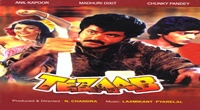
Coolie Full HD Movie Download
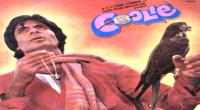
Zindagi Full HD Movie Download

Paapi Devta Full HD Movie Download
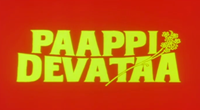
Zakhmi Aurat Full HD Movie Download
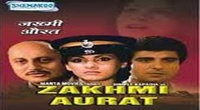
Slum Bala Full HD Movie Download
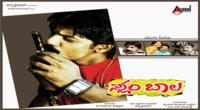
Pogaru Botu Full HD Movie Download
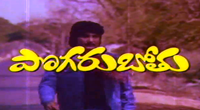
Kadaladu Vadaladu Full HD Movie Download
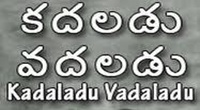
Crime Story Full HD Movie Download
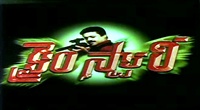
Bhagvat Geeta Full HD Movie Download
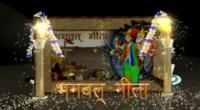
Moti Verana Chok Ma Full HD Movie Download
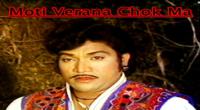
Blow Full HD Movie Download

A Time to Kill Full HD Movie Download

Thaskara Lahala Full HD Movie Download

Ranabheri Full HD Movie Download
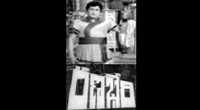
Parmeswari Mahimalu Full HD Movie Download
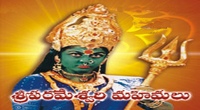
Mayadari Malligadu Full HD Movie Download
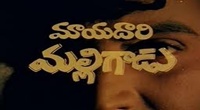
Kalaignan Full HD Movie Download
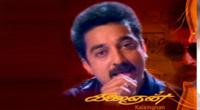
Ankhon Mein Tum Ho Full HD Movie Download

Amar Prem Full HD Movie Download
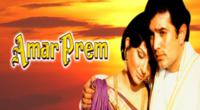
Download latest Movie from bollywood
- 1> baaghi 3
- 2> THE SKY IS PINK MOVIE FULL STORY AND REVIEW
- 3> Luka Chuppi
- 4> TO ALL THE BOYS I’VE LOVED BEFORE
- 5> Kabir Singh
- 6> Street Dancer 3D
- 7> Simmba
- 8> Gone Girl
- 9> The Girl Who Lived
- 10> Ludo
- 11> DILWALE DULHANIA LE JAYENGE
- 12> GUILTY
- 13> The Godfather
- 14> Adventures of Rusty
- 15> Sooryavanshi
- 16> Satyameva Jayate 2
- 17> Thappad
- 18> Bhool Bhulaiyaa 2
- 19> KGFChapter 2
- 20> Mardaani 2
- 21> Pinjar
- 22> Shivaji maharaj
- 23> Ek Villian 2
- 24> Hungama 2
- 25> Divergent
- 26> Mumbai Saga
- 27> The Internship
- 28> HIT (telugu)
- 29> Panga
- 30> The perfect date
- 31> 16 December
- 32> Gopala Gopala (Telugu)
- 33> Brahmastra
- 34> Gangubai Kathiawadi
- 35> Manmadhudu
- 36> Nenu local
- 37> Mahanati
- 38> Shatamanam bavathi
- 39> Lagaan
- 40> After
- 41> MOM
- 42> Shamshera
- 43> Raguvaran BTech
- 44> Khakee
- 45> The villain
- 46> OM
- 47> Mr. perfect
- 48> Bueatifull mind
- 49> Hichki
- 50> Gabbar Singh
- 51> Jogi
- 52> Before Sunrise
- 53> Before Sunset
- 54> Before Midnight
- 55> The Big Bull
- 56> Top Gun: Maverick
- 57> The Purge
- 58> The Sky is Pink
- 59> Laxmmi Bomb
- 60> Sadak 2
- 61> Sufna
- 62> Prithviraj
- 63> PK
- 64> Coolie No 1(2020)
- 65> Black Widow
- 66> Dear Zindagi
- 67> Dil Bechara
- 68> PHIR HERA PHERI
- 69> WAR
- 70> Dostana
- 71> RRR: Roudram Ranam Rudhiram
- 72> Maidan
- 73> Dabbang 3
- 74> Chhalaang
- 75> life as we know it
- 76> SherShaah
- 77> Sandeep Aur Pinky Faraar
- 78> Event Horizon
- 79> 83
- 80> Radhe: Your Most Wanted Bhai
- 81> Gunjan Saxena: The Kargil Girl
- 82> Mr India
- 83> Vivah
- 84> Anokha Bandhan
- 85> Ghost
- 86> Bhoot: Part One - The Haunted Ship
- 87> Haseen Dilruba
- 88> Laal Singh Chaddha
- 89> Qismat
- 90> Rajput
- 91> Drive
- 92> Dil Chahta Hai
- 93> Dil Ki Baazi
- 94> Dil Ka Rishta
- 95> Teesri Manzil
- 96> Dil
- 97> Love Aaj Kal
- 98> Khaali Peeli
- 99> Bunty Aur Babli 2
- 100> Atrangi Re
- 101> Gulabo Sitabo
- 102> Jodi
- 103> Suraj Pe Mangal Bhari
- 104> Deewana
- 105> Attack
- 106> Sardar Udham Singh
- 107> Toofan
- 108> THE LOVEBIRDS
- 109> Jersey
- 110> Ginny Weds Sunny
- 111> Thalaivi
- 112> Shiddat
- 113> Angels vs Zombies
- 114> Koi Mil Gya
- 115> Thank God
- 116> Bhuj: The Pride of India
- 117> Hum Aapke Hain Kaun
- 118> The Platform
- 119> Bird Box
- 120> Roohi Afzana
- 121> Torbaaz
- 122> Nikamma
- 123> World War Z
- 124> Extraction
- 125> Train to Busan
- 126> Life of Pi
- 127> SHAADI MEIN JROOR AANA
- 128> Himmat Aur Mehnat
- 129> To All The Boys: P.S. I Still Love You
- 130> Mimi
- 131> Good Newwz
- 132> Shubh Mangal Zyada Saavdhan
- 133> Raabta
- 134> Harry Potter and the Philosopher's Stone
- 135> Harry Potter and the Chamber of Secrets
- 136> Chhapaak
- 137> War of the Worlds
- 138> Harry Potter and the Prisoner of Azkaban
- 139> Harry Potter and the Goblet of Fire
- 140> MURDER MYSTERY
- 141> Shakuntala Devi
- 142> Bachchan Pandey
- 143> Jayeshbhai Jordar
- 144> Sheer Qorma
- 145> Saina
- 146> 'O' Pushpa I hate tears
- 147> Kedarnath
- 148> MS Dhoni The Untold Story
- 149> Chhichhore
- 150> Badhaai Ho
- 151> Unstoppable
- 152> Oz the Great And Powerful
- 153> The Girl on the Train
- 154> Haathi Mere Saathi 2020
- 155> The Conjuring: The Devil Made Me Do It
- 156> Gandhi Se Pehle Gandhi
- 157> The Song of Scorpions
- 158> Srimanthudu
- 159> Hello Guru Prema Kosame
- 160> Beauty and The Beast
- 161> Black Panther
- 162> Charlie and the Chocolate Factory
- 163> Bole Chudiyan
- 164> Fidaa
- 165> Duvvada Jagannadham
- 166> Bruce Lee: The Fighter
- 167> Hyper
- 168> Yaara
- 169> Red (2020)
- 170> Shivam
- 171> That Is Mahalakshmi
- 172> Nishabdham
- 173> Aashram 2020 web series
- 174> Laxmii
- 175> Mismatched
- 176> STUDENT OF THE YEAR 2
- 177> NAIL POLISH
- 178> Ramprasad Ki Tehrvi
- 179> KAAGAZ
- 180> 12 o Clock
- 181> The Power
- 182> bolo hau
- 183> Tribhanga
- 184> JAMUN
- 185> Madam Chief Minister
- 186> Maasaab
- 187> Aadhaar
- 188> Tanhaji
- 189> Bhaagi 3
- 190> Bhootnath
- 191> MALANG
- 192> Jai Mummy Di
- 193> Haathi Mere Saathi 2021
- 194> Shakeela
- 195> Unpaused
- 196> Annayya
- 197> Vamsoddharakudu
- 198> Mrugaraju
- 199> Narasimha Naidu
- 200> Sankranti
- 201> Manasu Maata Vinadhu
- 202> Anjaane
- 203> Apaharan
- 204> Bachke Rehna Re Baba
- 205> Bewafaa
- 206> Roohi
- 207> Radhe
- 208> Zindagi Khoobsoorat Hai
- 209> Yeh Mohabbat Hai
- 210> Yeh Kya Ho Raha Hai?
- 211> The Tomorrow War
- 212> DehradunDiary
- 213> Meri Shaadi Karaoo
- 214> Matruu Ki Bijlee Ka Mandola
- 215> No One Killed Jesica
- 216> Aag Ka Goola
- 217> Eight Million Dollars
- 218> Three Hundred
- 219> Cats and Dog
- 220> Decoy
- 221> Gold Rush
- 222> You Have Got Mail
- 223> Final Destination three
- 224> Tofan
- 225> Jungle
Request for Download movie Trimurthi
- Bollywood movies
- Latest Bollywood movies
- Download all bengali movies
- Download all bhojpuri movies
- Download all english movies
- Download all gujarati movies
- Download all hindi movies
- Download all kannada movies
- Download all malayalam movies
- Download all marathi movies
- Download all oriya movies
- Download all punjabi movies
- Download all tamil movies
- Download all telugu movies
- Bollywood action movies
- Bollywood adventure movies
- Bollywood animation movies
- Bollywood classical movies
- Bollywood comedy movies
- Bollywood crime movies
- Bollywood devotional movies
- Bollywood documentary movies
- Bollywood drama movies
- Bollywood family movies
- Bollywood fantasy movies
- Bollywood historical movies
- Bollywood history movies
- Bollywood horror movies
- Bollywood musical movies
- Bollywood mystery movies
- Bollywood mythological movies
- Bollywood patriotic movies
- Bollywood romance movies
- Bollywood romantic movies
- Bollywood sci-fi movies
- Bollywood social movies
- Bollywood spiritual movies
- Bollywood sports movies
- Bollywood suspense movies
- Bollywood thriller movies
- Bollywood war movies
- Hot actress list
- Hot gujarati actress list
- Hot tamil actress list
- Hot bhojpuri actress list
- Hot assam actress list
- Hot bihari actress list
- Hot jammu and kashmir actress list
- Hot gujarati actress list
- Hot haryana actress list
- Hot konkani actress list
- Hot marathi actress list
- Hot odia actress list
- Hot punjabi actress list
- Hot rajasthani actress list
- Hot kannada actress list
- Hot malayalam actress list
- Hot telugu actress list
- Hot tulu actress list
- Hot Actress list from Indian city
- Hot actress list from ahmedabad
- Hot actress list from alappuzha
- Hot actress list from bangalore
- Hot actress list from bangalore
- Hot actress list from bhopal
- Hot actress list from chandigarh
- Hot actress list from chennai
- Hot actress list from guwahati
- Hot actress list from hyderabad, india
- Hot actress list from indore
- Hot actress list from jaipur
- Hot actress list from kannur
- Hot actress list from kochi
- Hot actress list from kolkata
- Hot actress list from kollam
- Hot actress list from kottayam
- Hot actress list from kozhikode
- Hot actress list from lucknow
- Hot actress list from madurai
- Hot actress list from mangalore
- Hot actress list from mumbai
- Hot actress list from mysore
- Hot actress list from new delhi
- Hot actress list from patna
- Hot actress list from pune
- Hot actress list from thiruvananthapuram
- Hot actress list from thrissur
- Hot actress list from tiruchirappalli
- Hot actress list from vijayawada
- Hot actress list from visakhapatnam
- All Bollywood Movies
- Bollywood Celeb
- >Art Director
- >Audiography
- >Background Music
- >Banner
- >Choreographer
- >Cinematographer
- >Costume Designer
- >Dialogue Writer
- >Director
- >Distributor
- >Editor
- >Executive Producer
- >Hair Stylist
- >Lyricist
- >Music Director
- >Photographer
- >Playback Singers
- >Presenter
- >Producer
- >Production Company
- >Production Designer
- >Screenplay
- >Singer
- >Sound
- >Actor
- >Story Writer
- >Studio
- >Video Director
- >Miscellaneous
- >Publicity (pro)
- >Web Creator
- >Production Labs
- >Publicity Design
- >Publicity Stills
- >Writer
- >Miscellaneous Artists
- >Visual Effects
- >Reporter
- >Music Company
- >Shooting Studios
- >Picturised On
- >Line Producer
- >Co Producer
- >Asst Director
- >Casting Director
- >Cinematography
- >Choreography
- >Dialouge
- >Editing
- >Lyrics
- >Music
- >Story
- >Playback Singer Female
- >Playback Singer Male
- >Actor In A Comic Role (male/female)
- >Child Artiste
- >Ensemble Cast
- >Actor Popular Choice (male)
- >Actor Popular Choice (female)
- >Sa Re Ga Ma Pa Song Of The Year
- >Actor In Supporting Role
- >Actress In Supporting Role
- >Actor In Leading Role
- >Art Direction
- >Actress In Leading Role
- >Sound Recording
- >Costume Design
- >Special Effects
- >Action
- >Actor In A Negative Role
- >Lifetime Achievement Award
- >Cinematic Exellence (director)
- >Cinematic Exellence (male)
- >Cinematic Exellence (female)
- >International Male Icon
- >International Female Icon
- >Actor In A Supporting Role (male)
- >Actor In A Supporting Role (female)
- >Actor In A Comic Role
- >Playback Singer (male)
- >Playback Singer (female)
- >Most Promising Debut (female)
- >Most Promising Debut (male)
- >Most Promising Director
- >Sound Design
- >Lifetime Jodi
- >Marketed Film
- >Jury Award For Best Actor
- >Jury Award For Best Actress
- >Jury Award For Best Film
- >Jury Award For Best Director
- >Playback Singer(male)
- >Lifetime Acheivement Award (male)
- >Excellence Award
- >Jodi Award
- >Performer Of The Year
- >Presented By
